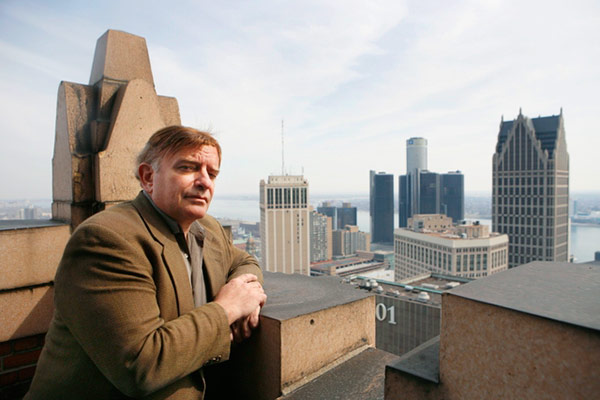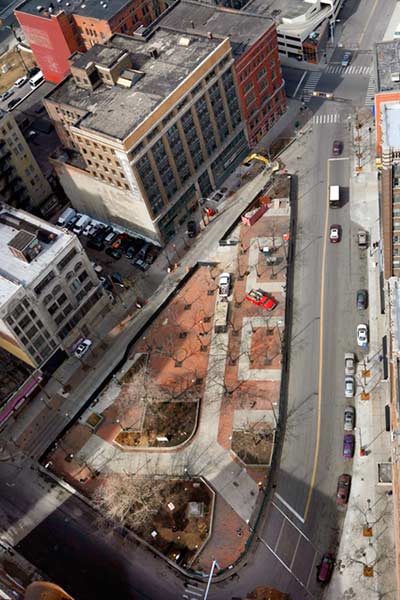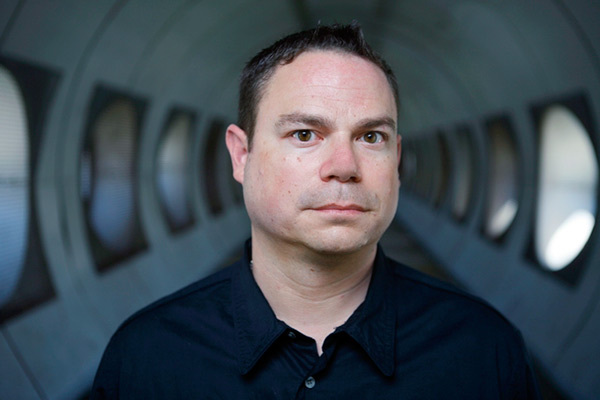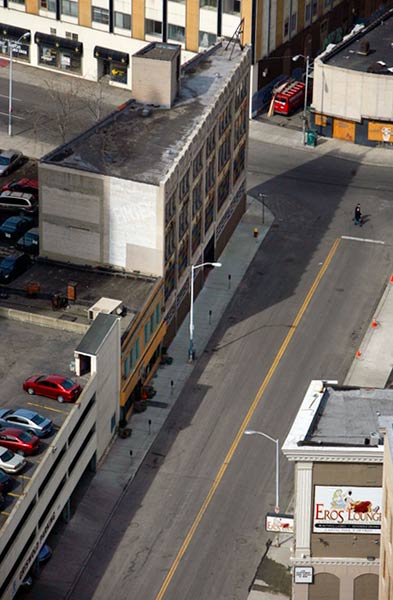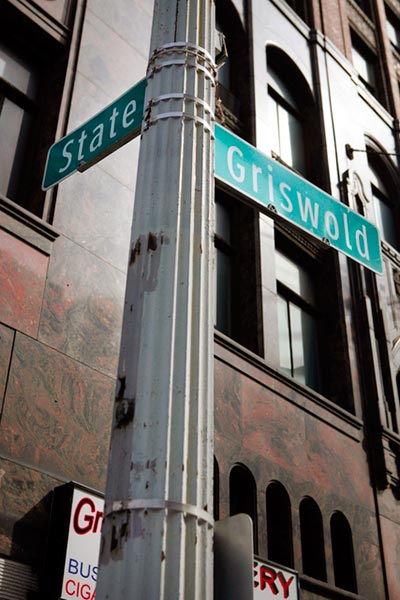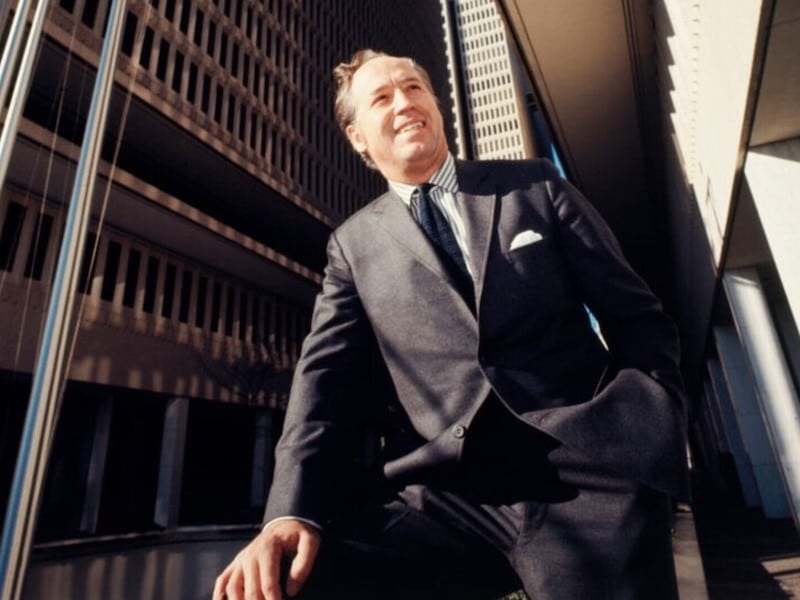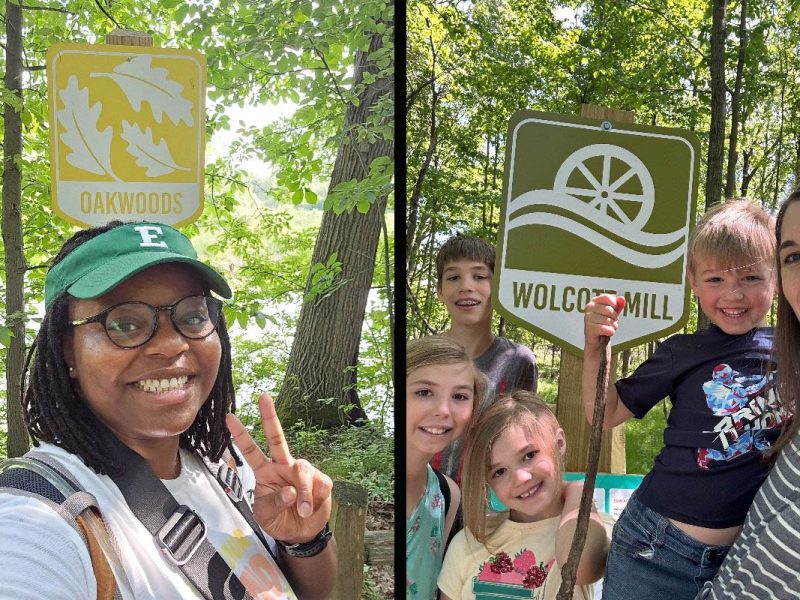What will be Detroit’s next hot spot? Signs point to Capitol Park
Developers and Detroit development officials have big dreams and big hopes for the Capitol Park area downtown. From a restoration of the park to new offices, lofts to places of cultural interest, this could be the city’s next development hot spot.
John Marusich scans the downtown Detroit skyline over the Westin Book Cadillac Hotel from his 32nd floor office in the David Stott Building. To his right is a full, spectacular view of Capitol Park. “This could be someone’s living room,” he says. “Can you imagine coming home to this?”
Capitol Park, an enclave one block west of Woodward and a block north of Campus Martius, could become the next hot development district in Detroit. With the Book Cadillac as an anchor, the triangular intimacy of this space could buzz with urban vitality soon. It has an “intimate, bohemian” European quality with contemporary possibilities, says Marusich, principal of Marusich Architecture and a member of a development team planning to convert the Stott to a residential/office/commercial complex.
After a decade of witnessing a gradual decline in Capitol Park, Marusich has never questioned his commitment to the area, although he admits questioning his sanity on occasion. “I ask myself a lot lately, ‘Am I crazy?’ Some people would say that my neurons aren’t all fused together.” But, he says, “I made a commitment at one point in time. I saw the reality of the potential. I didn’t see the reality of the reality.”
Yet Marusich, envisions even more clearly a vibrant street culture with shops, cafes, clubs and people. “What’s going to happen here is that all of a sudden it’s going to happen.”
1217 visions of the future
On the western side of the park, in 1217 Griswold, a sentinel moment in the city’s electronic music culture occurred in 1994-95. Ten of the building’s 2,600-foot lofts were filled with 23 people in their late teens/early 20s who shared an interest in electronic music. On weekends, the building became a destination point for the electronic underground: sound systems on each floor offered techno, house, and ambient chill-out soundscapes. For Jason Huvaere, a partner in Paxahau, an event production and management company, it was “the incubation period that changed my life and the electronic music community in Detroit.” It was the equivalent of “the third wave of the Detroit techno scene,” he says. But only for a minute. Within a year the scene dissolved, Huvaere moved, and Capitol Park was a memory.
Detroit, and Capitol Park, was where it all came together for Huvaere. “It’s obvious that there’s something here. You can describe it different ways. The new age mentality would say there’s some sort of creative power point or vortex. The geographic guy would say it made sense because the river’s here and transit. For me it’s been something that’s been very obvious. It’s a place where I’ve always wanted to work. That’s where I got my inspiration; it’s where my life was set in motion. I walked away from a lot of other things only because of the way I felt when I was down here. It was more important to me than anything. There were never any budgets or business plans. But there were visions of the future, especially in 1217.”
Huvaere looks at the building from the outside now with visions of being on the inside of a development effort to restore the building’s cultural legacy.
Cultural hub
At the northern point of Griswold at Clifford, technically outside the limits of the Capitol Park Historic District, is the Isaac Agree Downtown Synagogue. Dating back nearly 100 years, the synagogue is experiencing a revival through the efforts of a small but growing downtown-based membership. Board members Mitchel Alexander, who lives in Hubbard Farms, and Leor Barak, a West Village resident, are both employed in Detroit and envision a restoration of the synagogue as a community center, open to people of all faiths, and integrated in the cultural life of Capitol Park.
“Detroit has such a rich history of music,” says Barak. “I see Capitol Park as the hub of artists and musicians.” He notes that synagogue members include several local performers and artists including the Detroit filmmaker Oren Goldenberg. “We’d like to connect that as part of Detroit culture and our (Jewish) culture.” On a practical level, Board members are trying to link the synagogue to the Capitol Park historic district to acquire historic tax credits on the building’s planned renovation.
“There are a lot of empty buildings in Capitol Park, but you have a vibrant organization — the synagogue — which could be a strong stakeholder,” Alexander says. “For us, as a synagogue, it’s important to think about what is going on in the neighborhood and, at the same time, what is going on in the synagogue.” The synagogue plans to launch a fundraising campaign later in the year to support renovation, he adds.
“There is a lot of pent-up interest in the idea of old Jewish Detroit (from) people who grew up here and remember when Detroit had a lot of Jewish institutions and are excited about the idea of what the downtown synagogue can do. It would also be a bigger attraction if they were seeing (the redevelopment of) Capitol Park at the same time. Who knows… we may be able to help spur that in some way by bringing in a larger Jewish community.”
The synagogue has diverse neighbors: Cafe D’Mongo’s Speakeasy, a popular restaurant, Eros, a strip club, and the former Urban Bean Co., which opened briefly in 2008.
Last fall, three cornerstone buildings surrounding Capitol Park were acquired through public sources: 1212 Griswold, the oldest existing high rise office building in Detroit, 1145 Griswold, and the Farwell Building at 1249-59 Griswold. The Detroit Downtown Development Authority has authorized $600,000 to maintain and repairing the buildings. Other vacant buildings are owned by private landlords said to be considering loft developments.
The DDA is also overseeing a $1.1 million restoration of the park, which was the location of the original Michigan territorial and state government building from 1823 to 1847. The building was converted to a school, eventually burned in 1893, and was replaced by a park. The park is said to house the remains of Stevens T. Mason, the state’s first governor, and in recent years served as the city’s transit center until the Rosa Parks Transit Center was built in the old Times Square.
Capital needs for Capitol gains
There’s only small detail standing in the way of Capitol Park achieving its potential. Capital.
John Ferchill has walked around the park literally “thousands” of times, considering the potential of a residential/entertainment district similar to East 4th Street in his native Cleveland. “The most fundamental problem,” he says, “is that there is no financing available. I don’t think it’s any different than anywhere else.” Developer of the Book Cadillac, Ferchill understandably would like to see the Capitol Park neighborhood developed, and perhaps even play a role in the development.
The countervailing feelings of anticipation and anxiety over financing complicate visions for Capitol Park. Marusich agrees that financing is a major challenge but isn’t insurmountable, and predicts that development will begin next year.
Standing on the corner of Griswold and State, he can’t contain his enthusiasm: “It’s there,” he says looking around the park. “It’s there.”
Dennis Archambault is a Detroit-based writer and frequent contributor to Model D and Metromode. Send feedback here.
